Best Computer Awareness Books with Free PDFs
- Don’t let price be a barrier to your success. We’ve compiled a list of the top three computer awareness books, with their latest 2025 editions, that are essential for competitive exam preparation. But that’s not all—we’ve also uploaded numerous computer awareness book PDFs for free.
- This way, you can easily access all the content you need right from your phone, giving you the best chance to achieve your goals without having to purchase a single book.
-
1. Arihant Computer Awareness 2025 Revised Edition
The book covers all key sections for competitive exams, featuring chapter-wise MCQs, PYQs up to 2024, plus 15 free tests for self-assessment.
Our Rating:-
9
/
10⭐
Book Details:-
Key Features:-
-
2. PW Computer Awareness – 2025 Edition
Our Rating:-
8
/
10⭐
Book Details:-
Key Features:-
-
3. Computer Awareness 2025 by Abhas Saini
Our Rating:-
8
/
10⭐
Book Details:-
Key Features:-
Functioning of a Computer
A computer performs four basic functions which are as follows:
- Input Information or data that is entered into a computer is called input. It sends data and instructions to the Central Processing Unit (CPU).
- Processing It is the sequence of actions taken on data to convert it into information which is meaningful to the user. It can be calculations, comparisons or decisions taken by the computer.
- Output It makes processed data available to the user. It is mainly used to display the desired result to the user as per input instructions.
- Storage It stores data and programs permanently. It is used to store information during the time of program execution and possible to get any type of information from it.
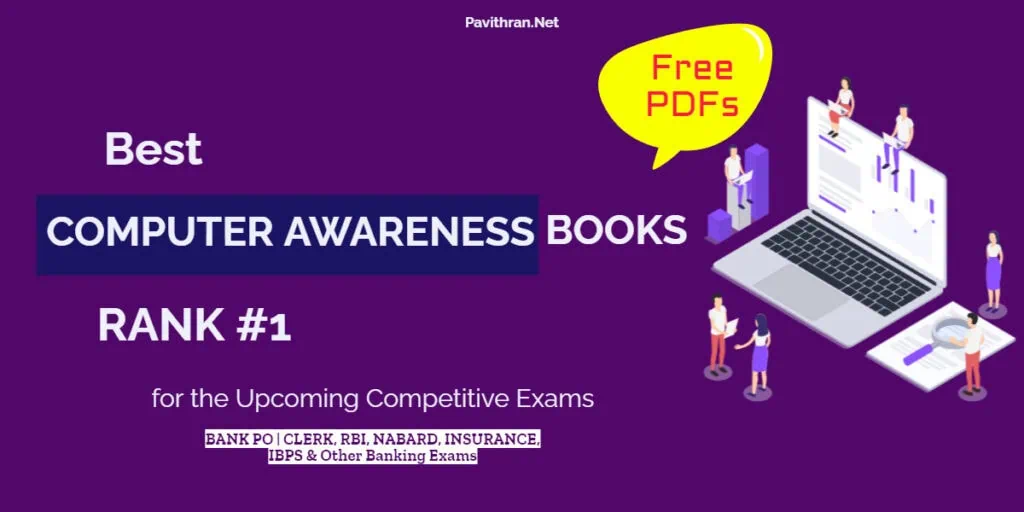
Features of Computer
The key features of the computer are as follows
- Speed The computer can process data very fast at the rate of millions of instructions per second.
- Accuracy Computers provide a high degree of accuracy. They respond to the user as per the input instructions.
- Storage Capacity Computers are capable to store huge amount of data which depends on the capacity of hard disk.
- Versatility Computers can do different types of work simultaneously. They can perform multiple tasks at the same time.
Computer Awareness Syllabus for Banking Exams
Below are the 8 important Topics you should cover from Computer Awareness for Banking Exams such as Bank PO/Clerk, IBPS, SBI, RBI, NABARD, Insurance Exams
- Computer Knowledge
- Computer basics
- MS Office
- Internet and web technology
- Database Management System
- Networking
- computer and Networking Security
- Operating System
Arihant Computer Awareness PDF
Download Arihant’s Computer Awareness Book Pdf which is highly useful for Banking, SSC & other Govt Competitive exams. The Book consists of Chapterwise Theory Notes & Practice Sets.
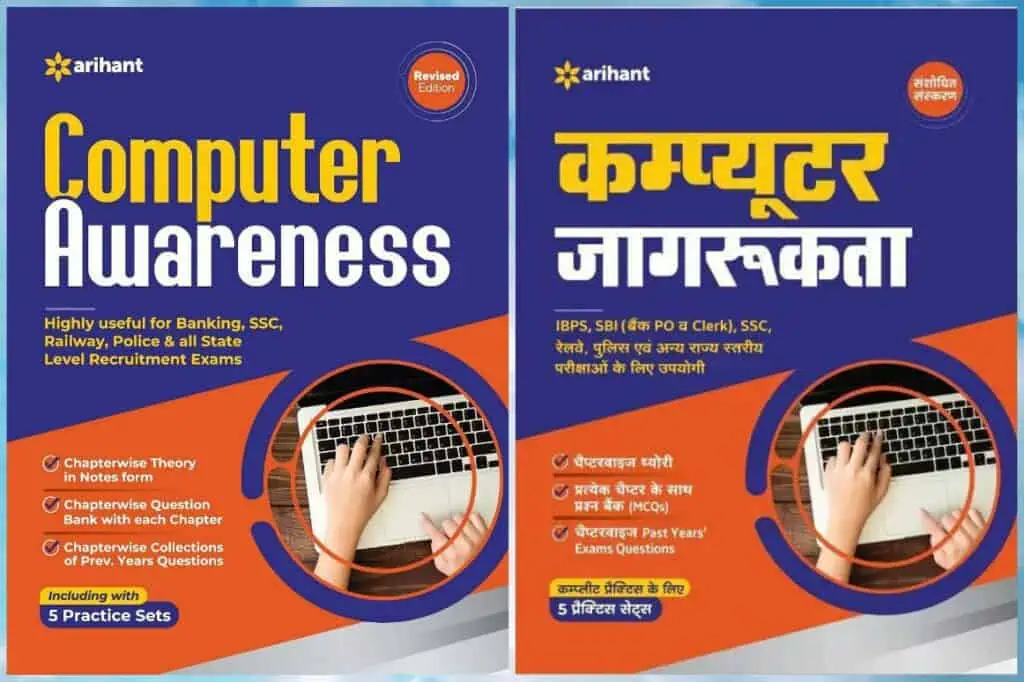
| Language: | English & Hindi |
| No of Pages: | 186 |
| File Size: | 8 Mb |
Disha Computer Knowledge [2nd Edition] PDF
Download Disha’s Computer Knowledge Book Pdf which is highly useful for SBI & IBPS Clerk/PO, RRB, RBI, SSC & other Govt Competitive exams. The Guide enhances ur studies with Infographics & Chart for easy Learning which includes PYQs and Practice Sets.
![Disha Computer Knowledge [2nd Edition] PDF](https://www.pavithran.net/wp-content/uploads/2023/02/Disha-Computer-Knowledge-2nd-Edition-782x1024.webp)
| Language: | English |
| No of Pages: | 300 |
| File Size: | 6.64 Mb |
Computer Aptitude Book PDF
Get Computer Aptitude Book – One of the Best Books for Computer Awareness Subject where you can get in-depth & thorough knowledge about Computer and its Functions.
Mostly Useful for SBI/IBPS, LIC, RBI, UIIC & other Financial Sector Exams.
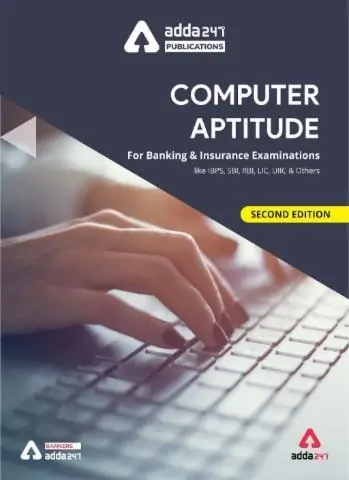
| Language: | English |
| No of Pages: | 379 |
| File Size: | 78 Mb |
Objective Computer Knowledge And Literacy 1690+ Objective Question (English Medium)
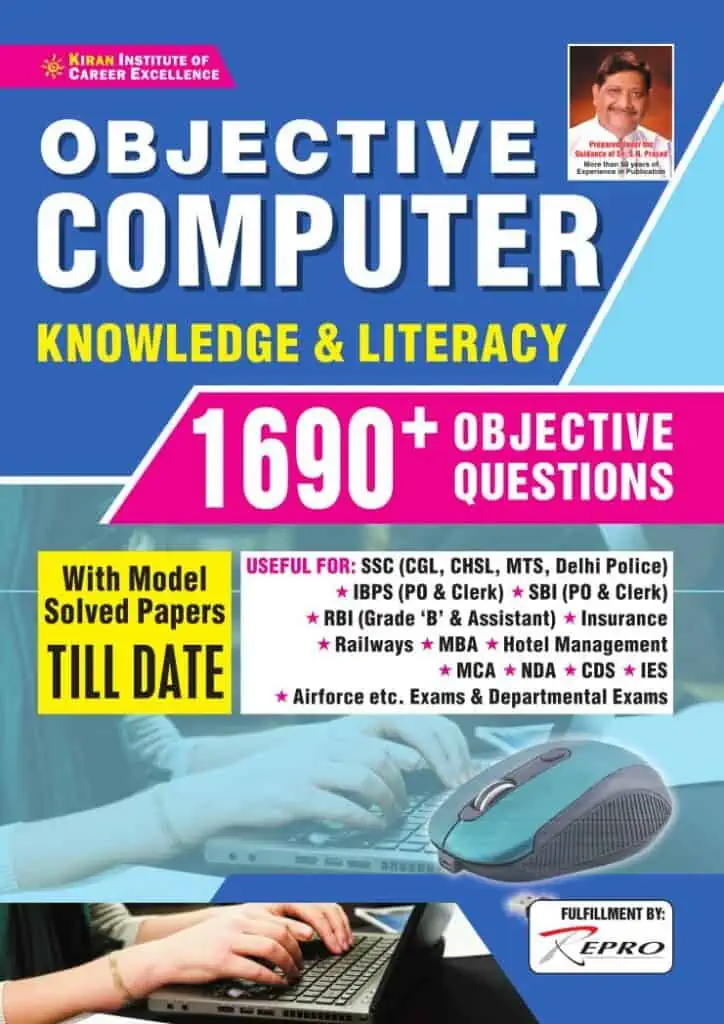
| Language: | English |
| No of Pages: | 216 |
| File Size: | 2 Mb |
Important Computer Awareness Publication Books PDF
You can find some of the most popular and best-selling books from renowned publishers available as PDF downloads. These are trusted resources used by many toppers.
Make the most of these valuable materials to prepare effectively and master Computer Awareness/Knowledge. With the right practice, you’ll boost your confidence and be ready to succeed in your upcoming competitive exams.
|
PDF BOOKS NAME |
Download Links |
|---|---|
|
Computer Knowledge – Theory & Practical Questions (English & Hindi) | |
|
All India State PSC AE & PSU Computer Science & Engineering – Information Technology Solved Papers [English Medium] | |
|
Computer Planner Solved Papers – 9498 Objective Questions [Bilingual] | |
|
Computer General Knowledge 2024 [Hindi Medium] | |
|
COMPUTER Handbook for Quick Revision [English & Hindi] PDF | |
|
Samundragyaan Computer Rapidfire 5500+ One-Liner [English & Hindi] | |
|
NTA UGC – NET JRF Computer Science & Applications Solved Papers 2024-25 [English Medium] | |
|
RRB Computer Knowledge TCS Pattern Theory + PYQs 2024-25 [English + Hindi] | |
|
UPSSSC Mains Computer Information & UP State related GK Chapterwise Study Material 2025 [Hindi Medium] | |
|
Computer Science & Engineering-IT Quick Revision Capsule 2024 [English Medium] | |
|
Computer 1500+ Chapterwise PYQ by Gagan Pratap Sir | |
|
Computer Planner Chapterwise Solved Papers 2024-25 [English Medium] | |
|
Computer Book by X-EEED Publication [Hindi] | |
|
Computer 2.0 E-book For All Exam – RBE [Hindi & English] | |
|
Computer Quick Revision Capsule 2022-23 | |
|
Computer 50+ MCQs asked from SSC 2020-2025 |
COMPUTER KNOWLEDGE / AWARENESS FREE PDFs [ENGLISH MEDIUM]
You’ll find free Computer Awareness/Knowledge books in PDF format, available in English medium. Make it a habit to go through them regularly and use them for quick revision.
These resources can help you boost your accuracy, strengthen your basics, and crack your upcoming exams with ease.
Start practicing today—it’s free, simple, and effective!
Computer Awareness for all Competitive Exams with 3500+ MQs, 50+ Sets – Soumya Ranjan Behera
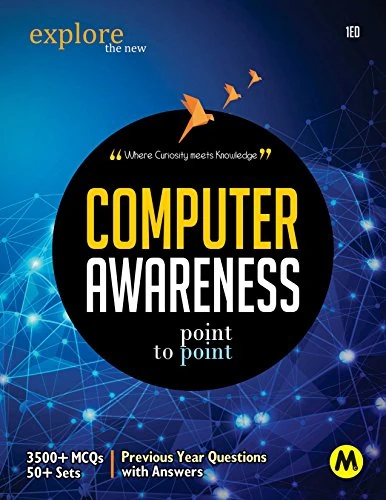
Computer Awareness (2021 Edition) – N K Gupta
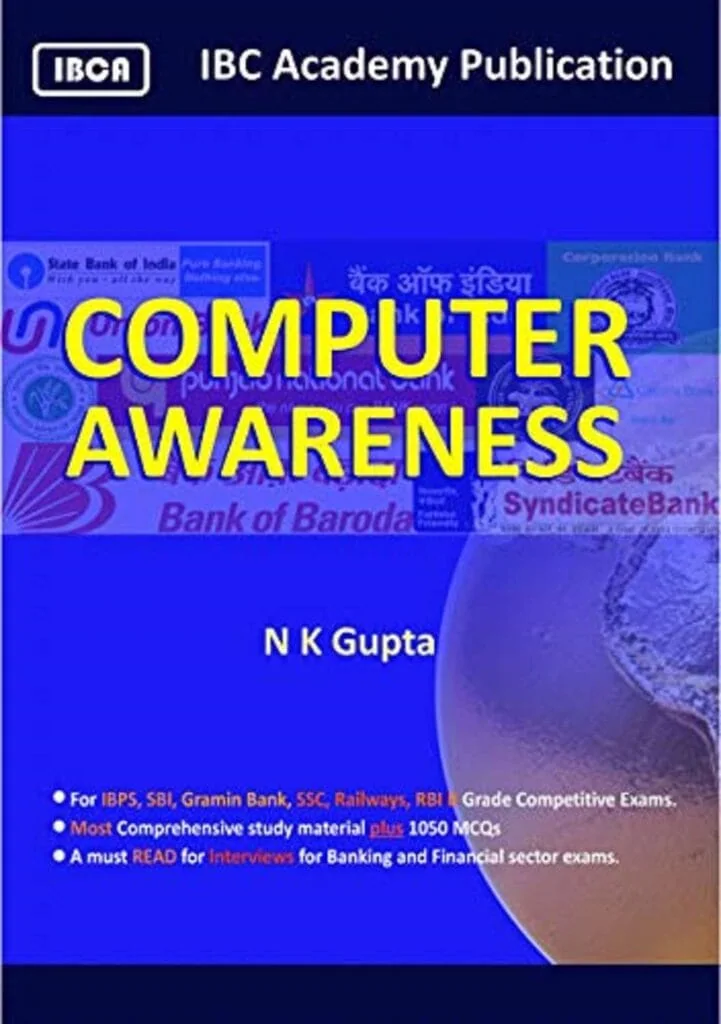
Computer Awareness – Computer Objective Questions – Bijendra Dhaka
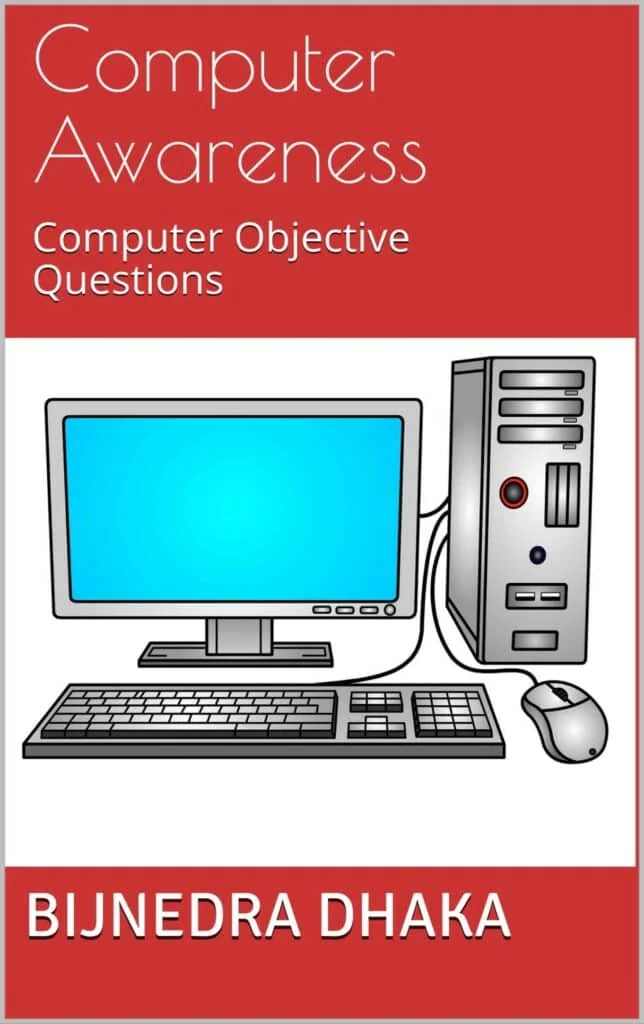
Objective Computer Awareness for Competitive Examination – Rajesh Sarswat
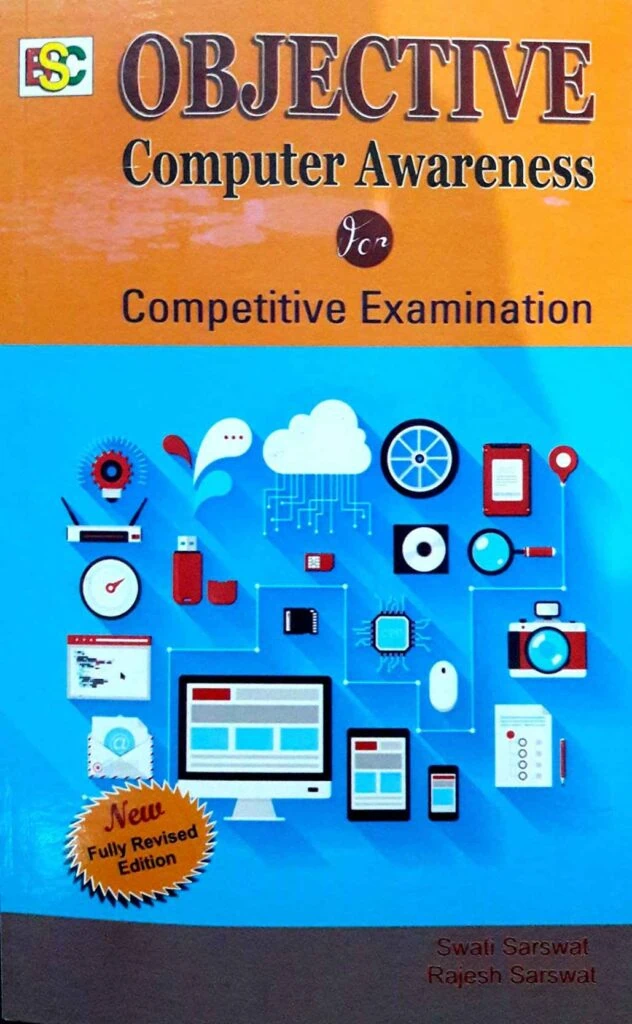
Computer Practice Book
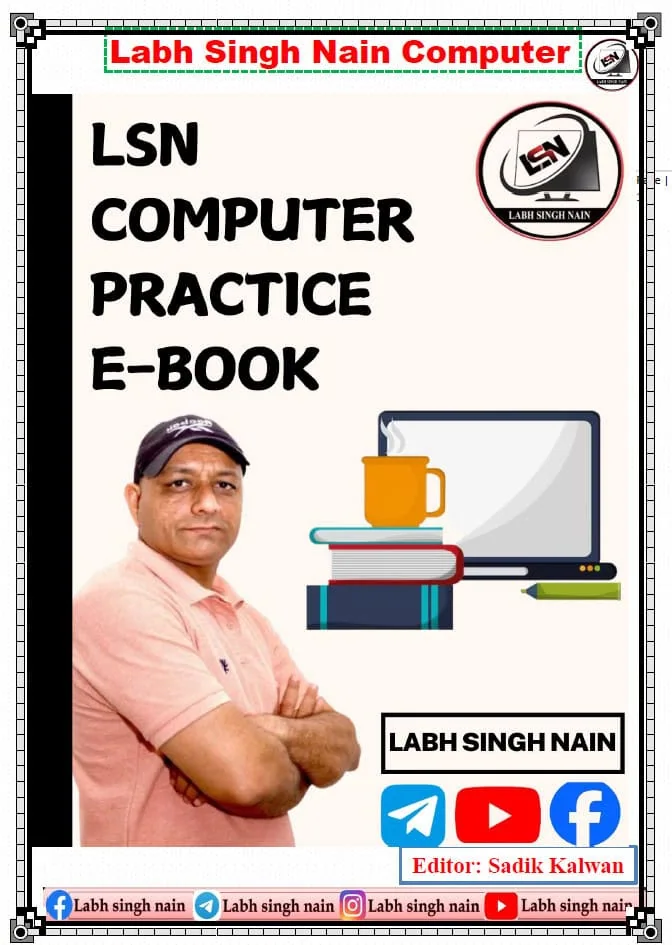
3000+ Objective Computer Awareness – MANPREET SINGH
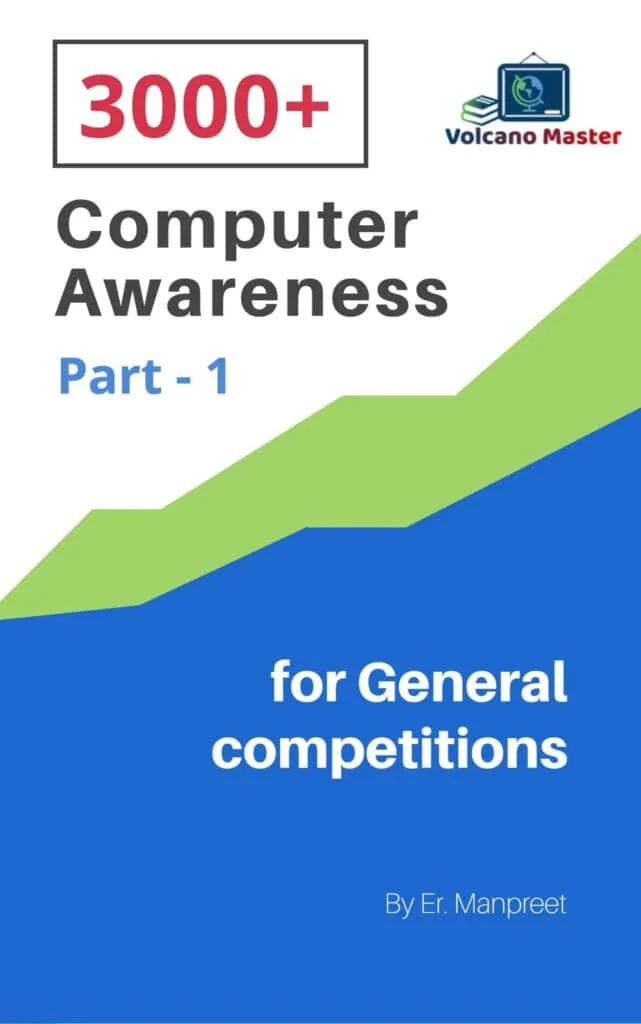
Basic Concepts Of Computer For Competitive Exam – SAMIR MANDAL
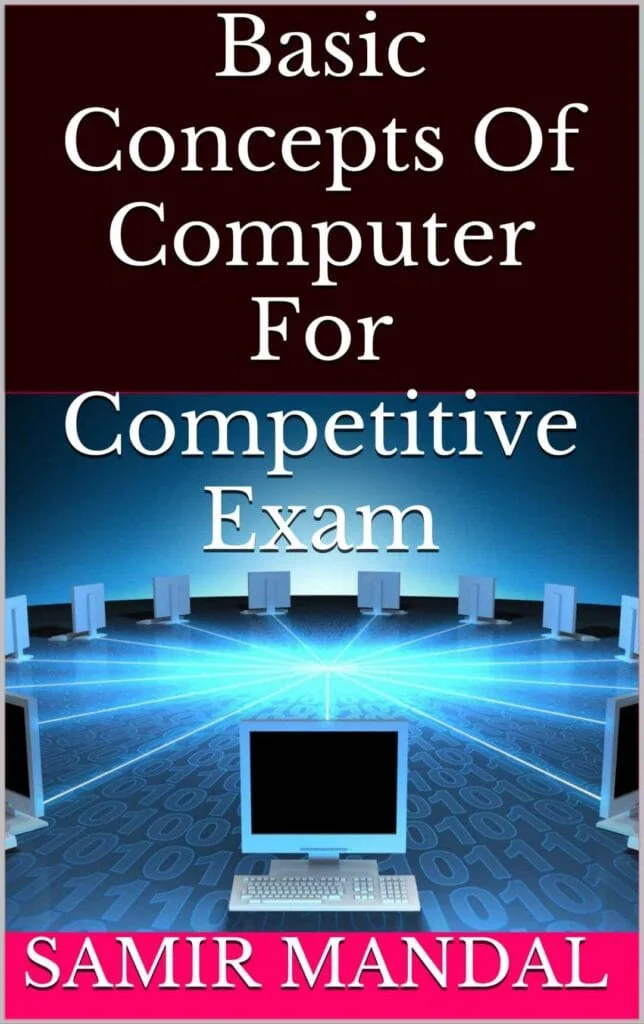
Computer Awareness Computer Aptitude MCQs – Mayank Raghuvansh
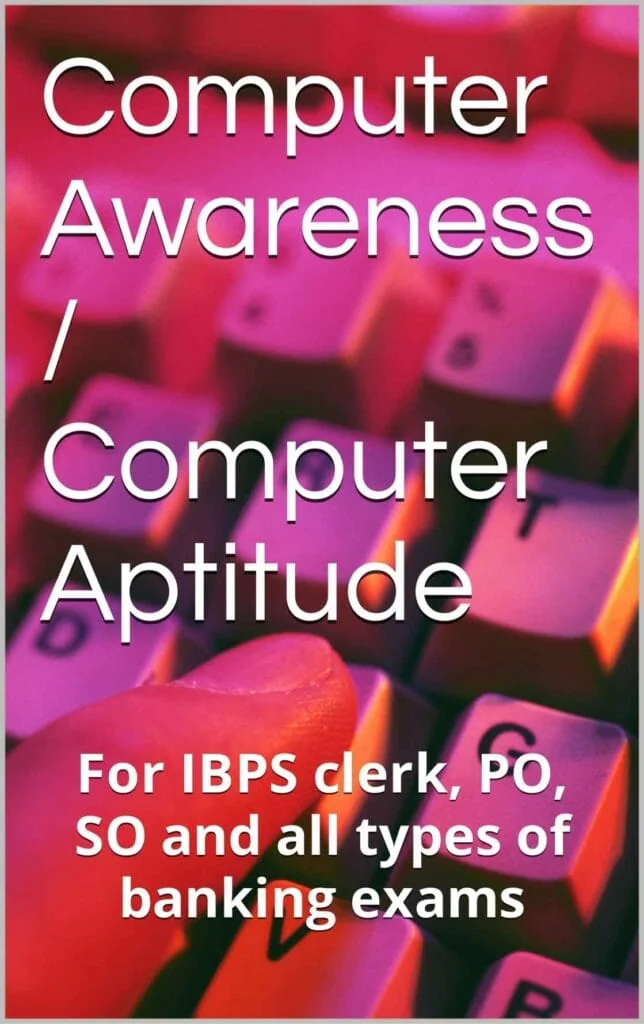
Computer Awareness for all Govt Exams – Keerthana Vinodh Kumar
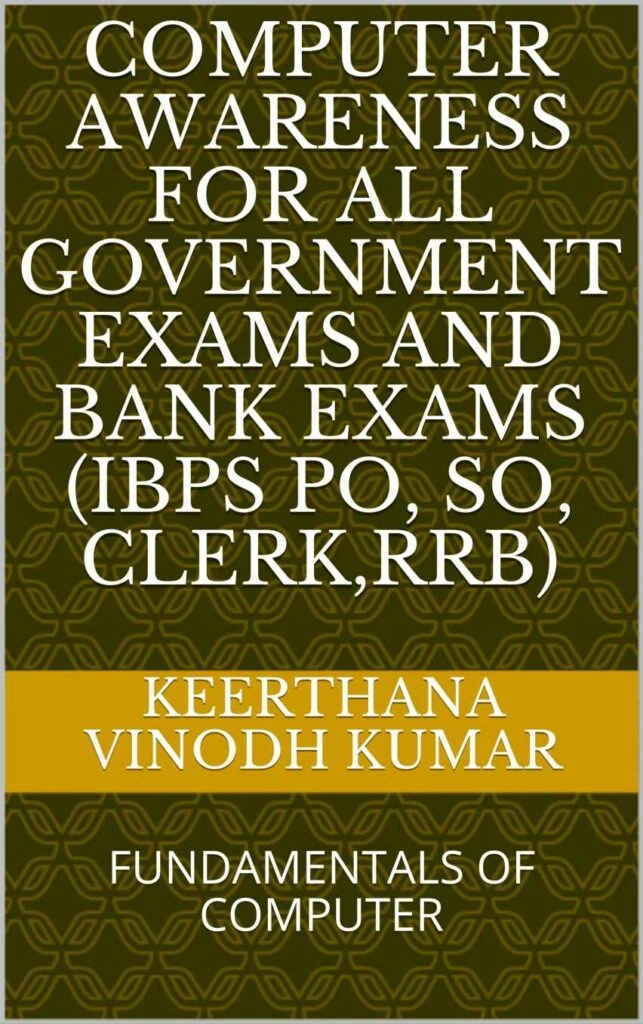
Computer Awareness Guide For All Competitive Exams – Mohammad Khaja Shareef
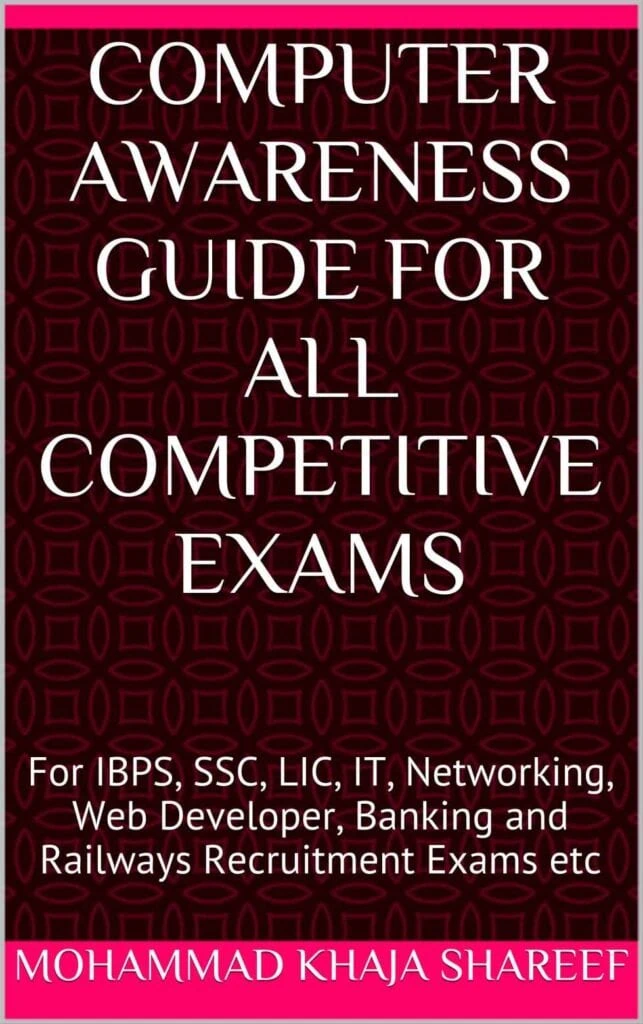
Computer Awareness Short Notes & Question Bank (1000+ Objective MCQs) – GK Publication
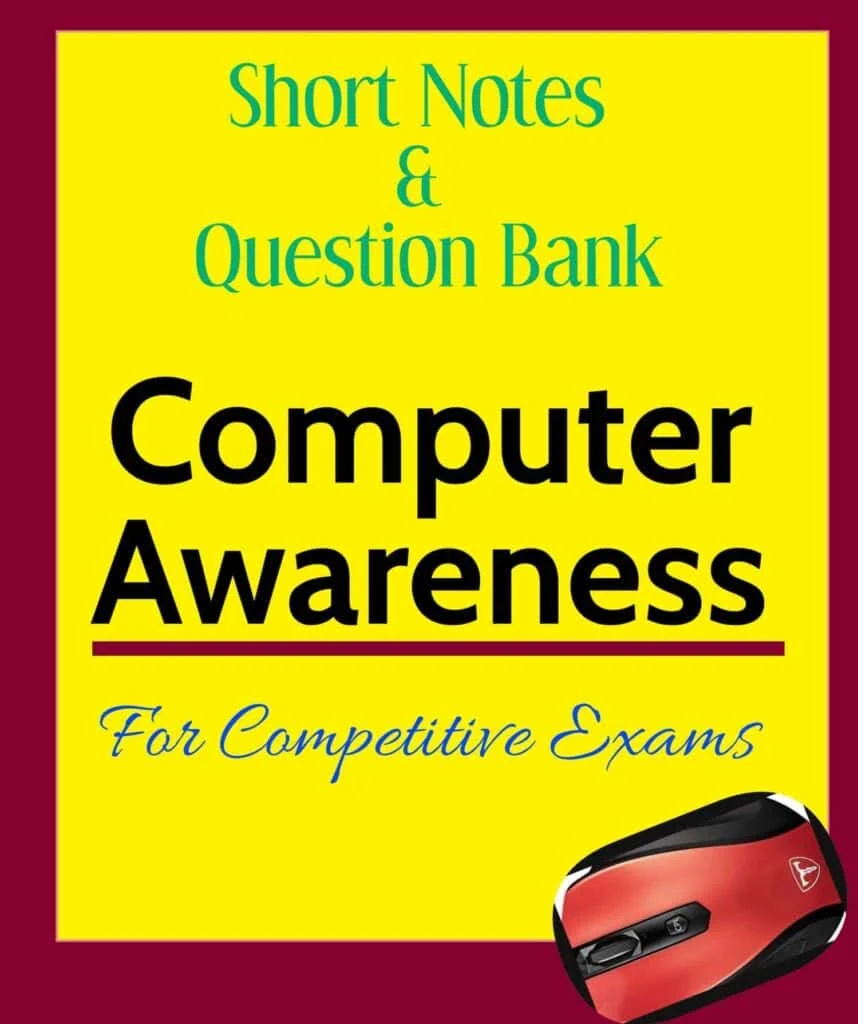
Computer General Awareness with MCQs – IndiaDeck Publication
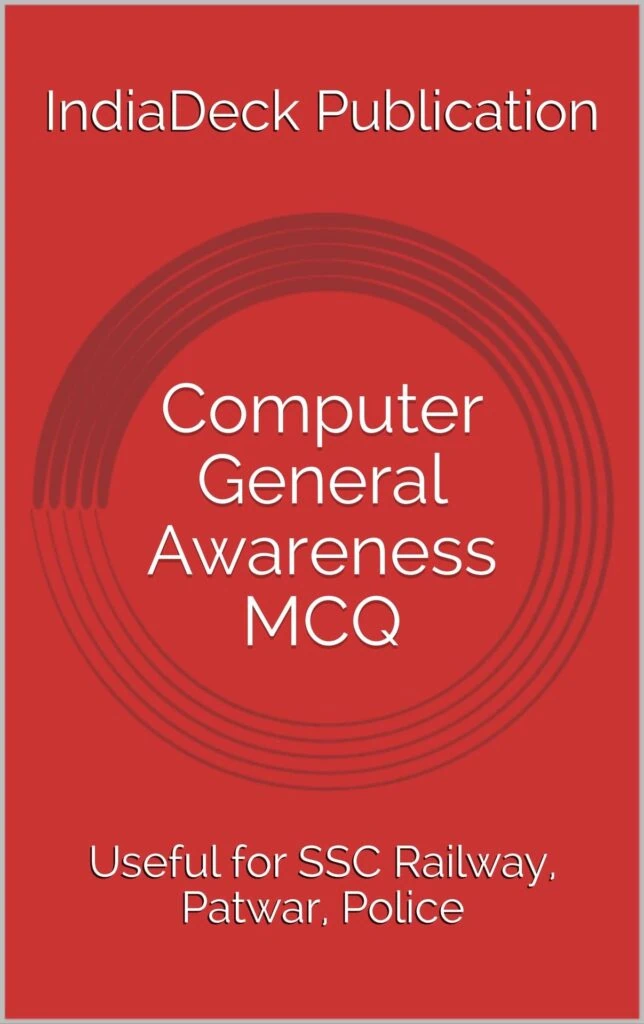
Computer Knowledge for all purpose – Mayank Raghuvansh
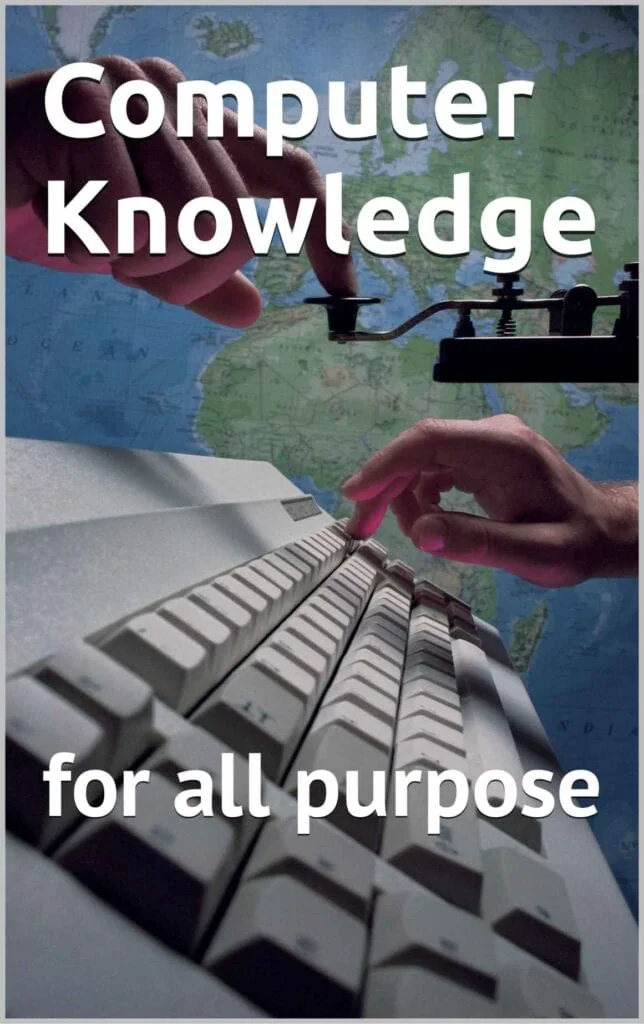
Computer one Liner Notes – Praveen Shandilya
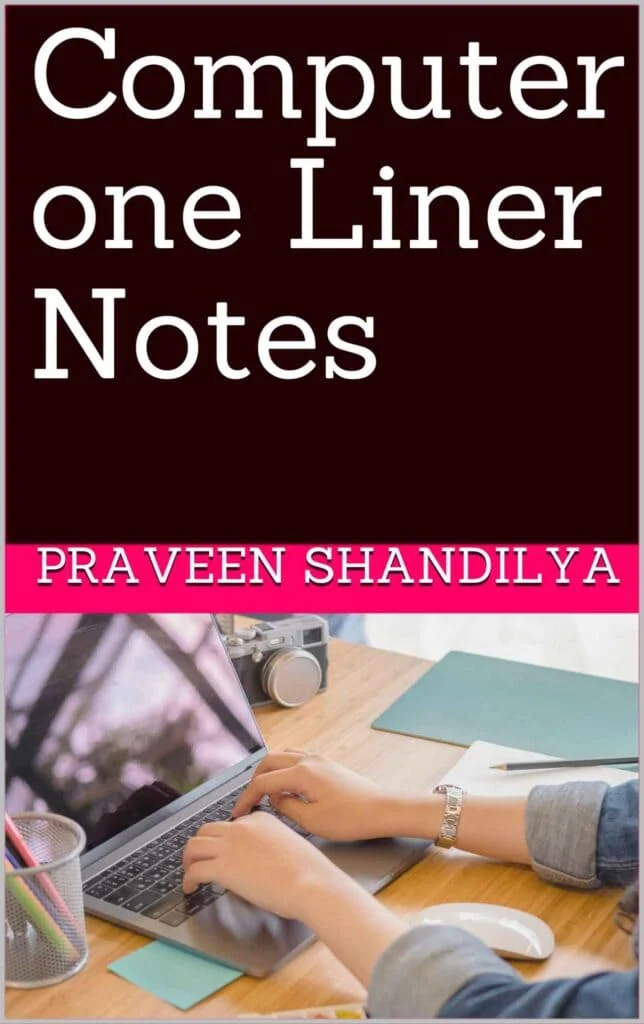
Top 500 Computer Awareness MCQs – Oliveboard
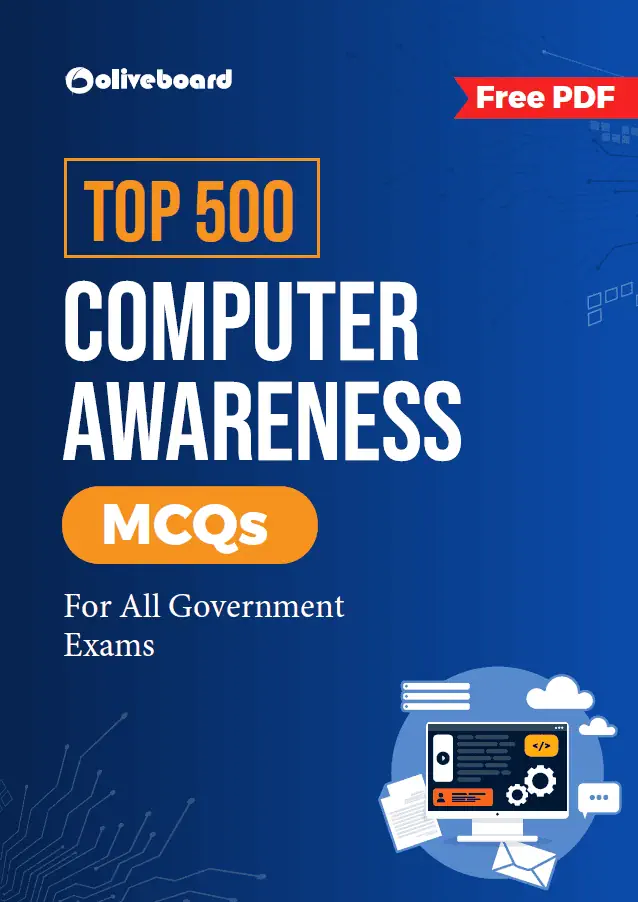
COMPUTER GYAN / AWARENESS FREE PDFs [HINDI MEDIUM]
You’ll find free Computer Awareness/Knowledge books in PDF format available in Hindi medium. Now you can prepare in your own mother tongue, making it easier to understand the concepts clearly.
Use these resources regularly for quick revision, practice consistently, and improve your accuracy and confidence.
Start now and get one step closer to cracking your upcoming competitive exams with ease!
Computer Gyan for SBI – IBPS Clerk – Disha Experts
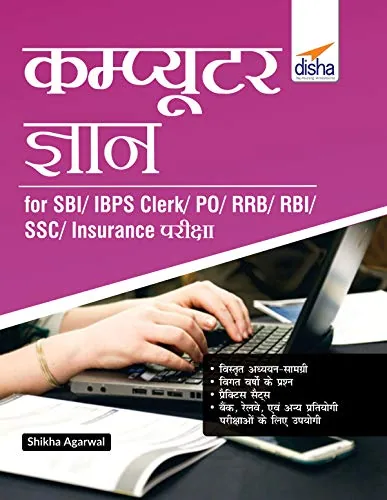
Ariahant Academy Computer Notes in Hindi
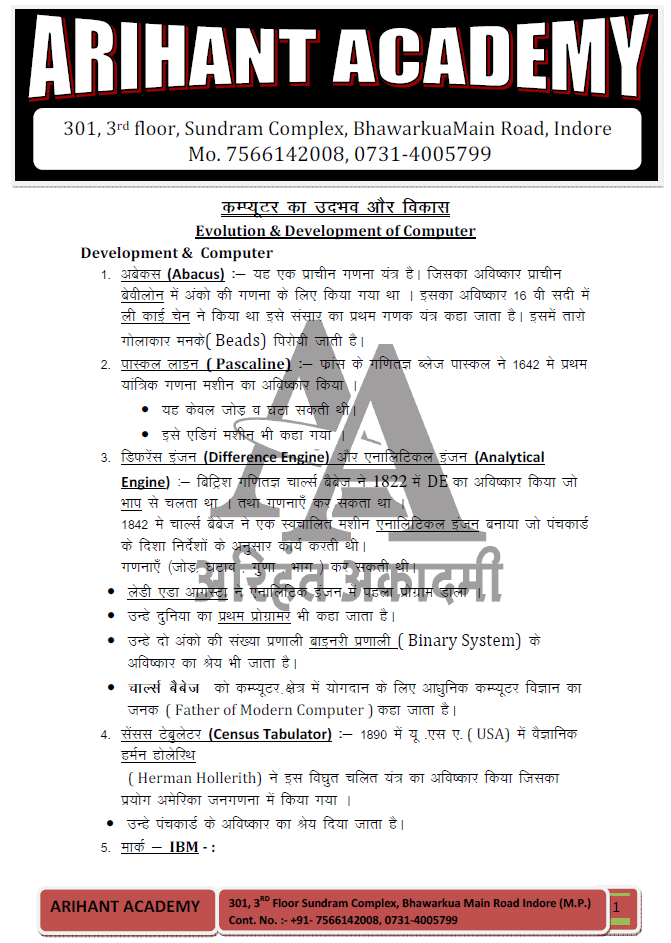
What is a Computer?
A computer is a programming machine designed to perform arithmetic and logical operations automatically and sequentially on the input given by the user and gives the desired output after processing
The word computer has been originated from the Latin word ‘Computerae’ which means’ to compute’ or ‘to calculate’. It is an electronic device that manipulates information or data according to the set of instructions. It has the ability to store, retrieve and process data.
A computer can be defined as ” An automatic electronic device used for making a calculation or by manipulating controlling operations that are expressible in numerical or logical terms.”
A computer is used to type documents, send E-mails and browse the Internet. It is also used to handle accounting, database management, presentations, games and so on.
Major parts of the Computer
Input Devices
A device that can be used to insert data into a computer or other computational device is known as the Input device.
Keyboard:- it is an input device. it is used to do typing of alphabets and
numbers it looks like at an ordinary typewriter. It contains 101 or 104 keys.
The buttons on the keyboard can be classified:
- Alphabet keys
- Numeric keys
- Special character keys
- Special keys
- Function keys
Alphabet keys: – those keys which are used to do typing of letters ‘A’ to ‘Z’ called alphabetic keys
Numeric keys: – those keys which are used to do typing of digits ‘0’ to 9 are called numeric keys.
Special character keys: -those keys which are used to do typing of special symbols +,-,x,/ etc are called special character keys
Special keys: – those keys which are used to send special signals to the CPU is called special keys
Function keys: -there are 12 keys labeled as F1 to F12 are present at the the first row of the keyboard. Those keys are used as a shortcut of instructions the function (work) at these keys depends upon the software being used. These keys are also called programmable keys.
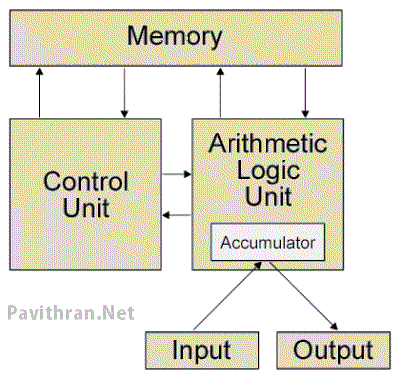
Special keys and their work
Enter keys:- These keys used to move the cursor to the beginning of the next line or to get a result of instructions.
Space bar: – This key is used to put a blank space between two words.
Backspace:- This key is used to erase the character which is lost of
the current cursor position.
Caps lock:- This key is used to do typing of the capital letter it is also called
toggle key when it pressed for the first time it is turned on and when it is
pressed again it is turned off.
Cursor control keys:- These keys are used to move the cursor the pointing
direction.
Home keys: – These keys move the cursor to the beginning of the first line.
End key: – These keys move the cursor to the end of the line.
FULL-FORM OF COMPUTER
Computer is the Acronym of Commonly Operated Machine Particularly Used for Technology Education and Research
| C | Commonly |
| O | Operated |
| M | Machine |
| P | Particularly |
| U | Used for |
| T | Technology |
| E | Education & |
| R | Research |
Categorization on the basis of generation
First Generation(1940-1956): computers used Vacuum tubes.
Second Generation(1956-1963): computers used Transistor
Third Generation(1964-1971): computers used Integrated Circuits
Fourth Generation(1971- Present): computers used Microprocessors
Fifth-generation(Present and Beyond): computers based on Artificial Intelligence
There are many types of computers available on the basis of their working areas: Supercomputer, work frames, personal computers, desktops, laptops, palmtops, etc.
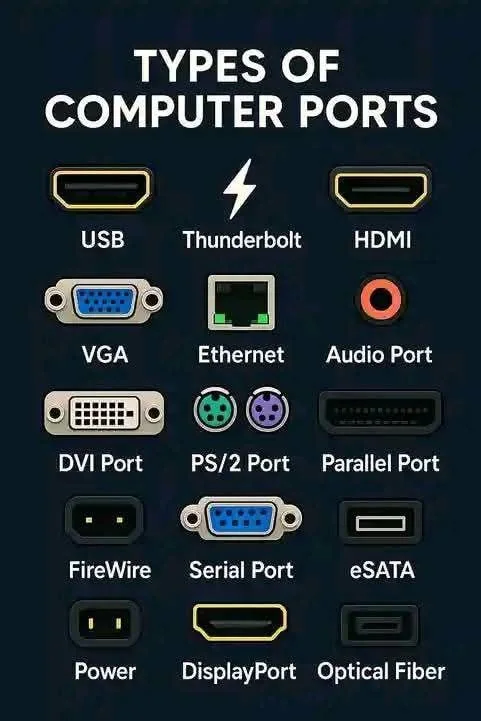
INVENTIONS & FOUNDERS
GENERATION OF COMPUTER
Till Now
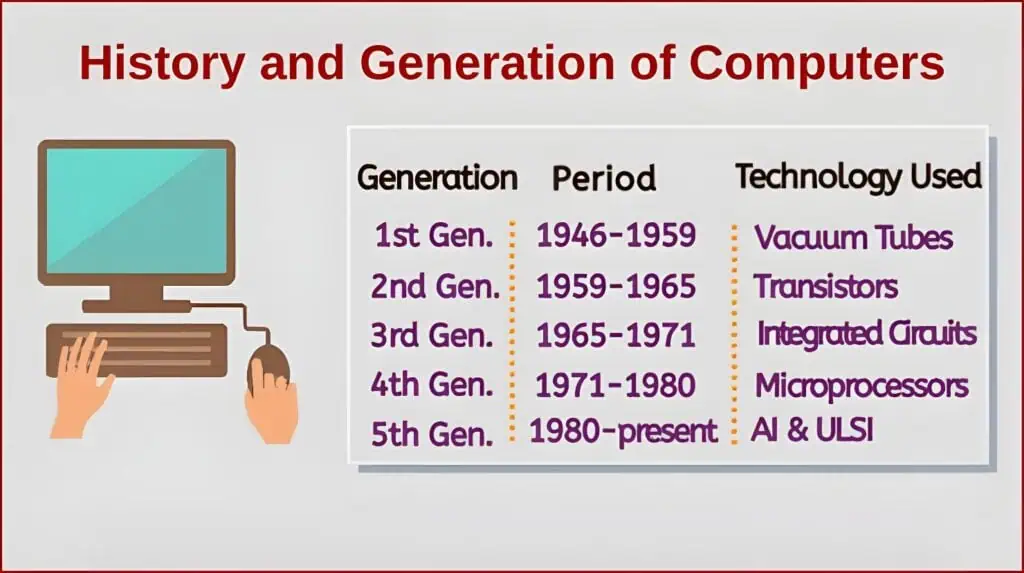
COMPUTER / IT ABBREVIATION
Most Repeated Questions
Computer Awareness Quiz
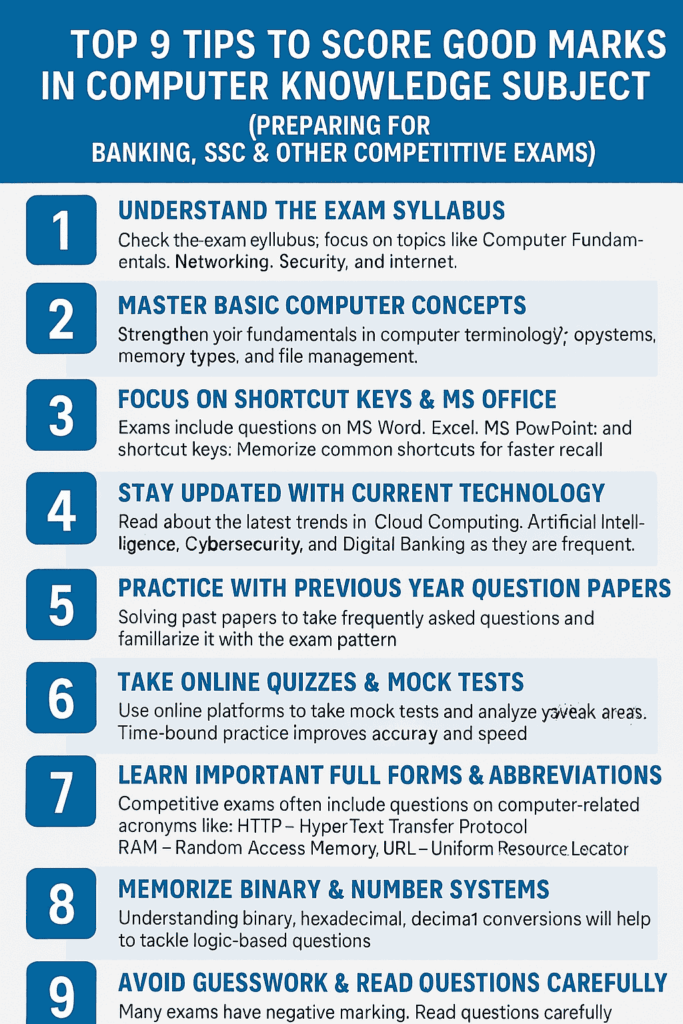
Useful Books for Competitive Exams
Best Books for Competitive Exams [PDF]
Disclaimer: Pavithran.Net doesn’t aim to promote or condone piracy in any way. We do not own any of these books. We neither create nor scan this Book. The Images, Books & other Contents are copyrighted to their respective owners. We are providing PDFs of Books that are already available on the Internet, Websites, and Social Media like Facebook, Telegram, Whatsapp, etc. We highly encourage visitors to Buy the Original content from their Official Sites. If any way it violates the law or if anybody has Copyright issues/ having discrepancies over this post, Please Take our Contact Us page to get in touch with us. We will reply as soon as we receive your Mails.
We Need Your Support. Please Share the Link if it is helpful to your Cherished circle

![Arihant Computer Awareness 2025 Revised Edition [English & Hindi]](https://www.pavithran.net/wp-content/uploads/2025/08/Arihant-Computer-Awareness-2025-Revised-Edition-English-Hindi.webp)
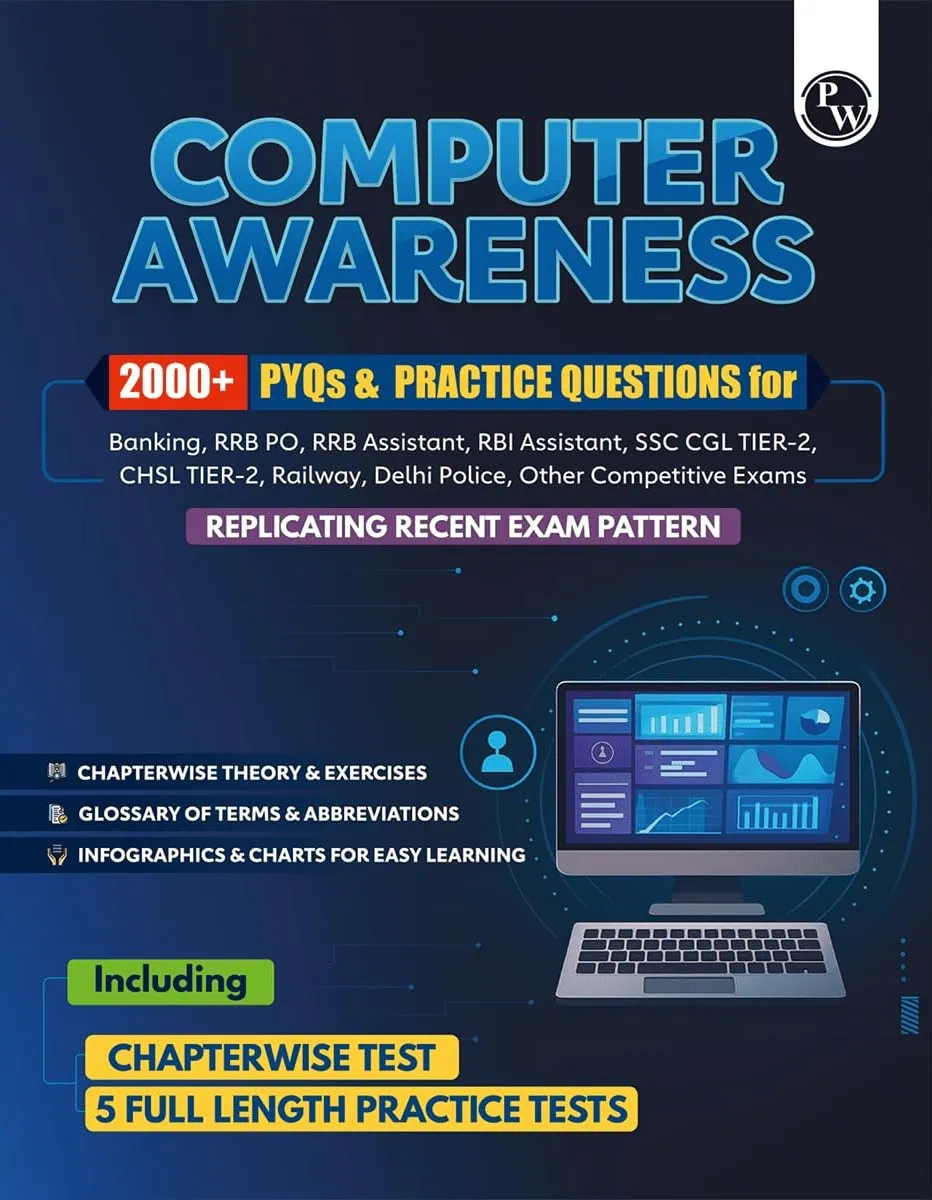
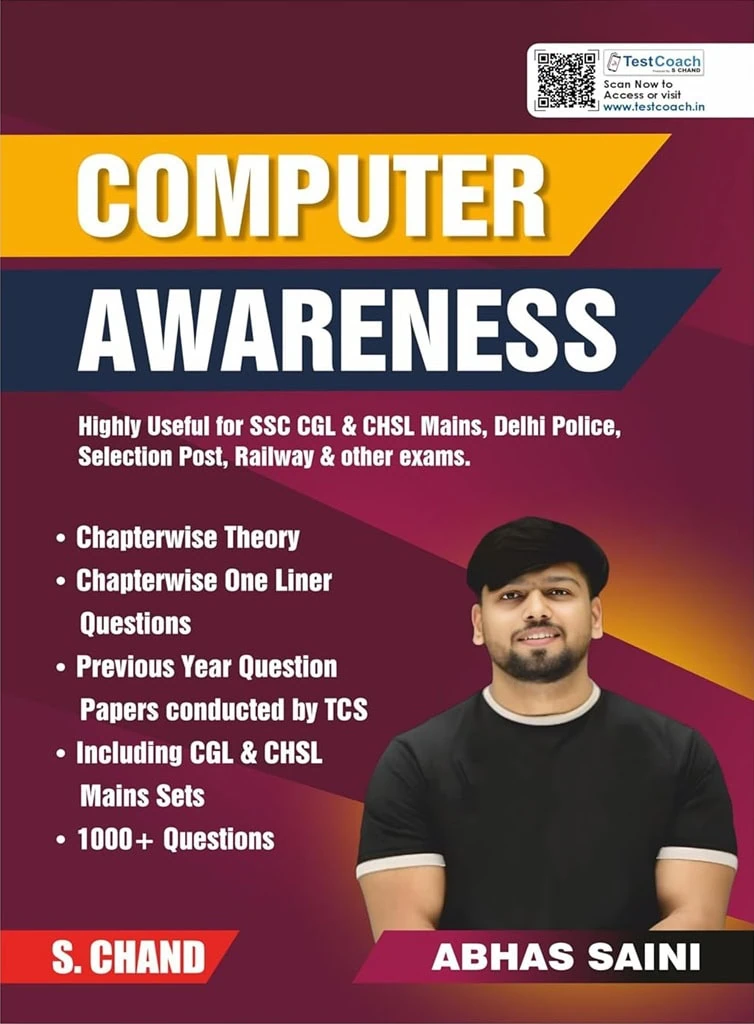

![Disha Computer Knowledge [2nd Edition] PDF](https://www.pavithran.net/wp-content/uploads/2023/02/Disha-Computer-Knowledge-2nd-Edition-768x1005.webp)
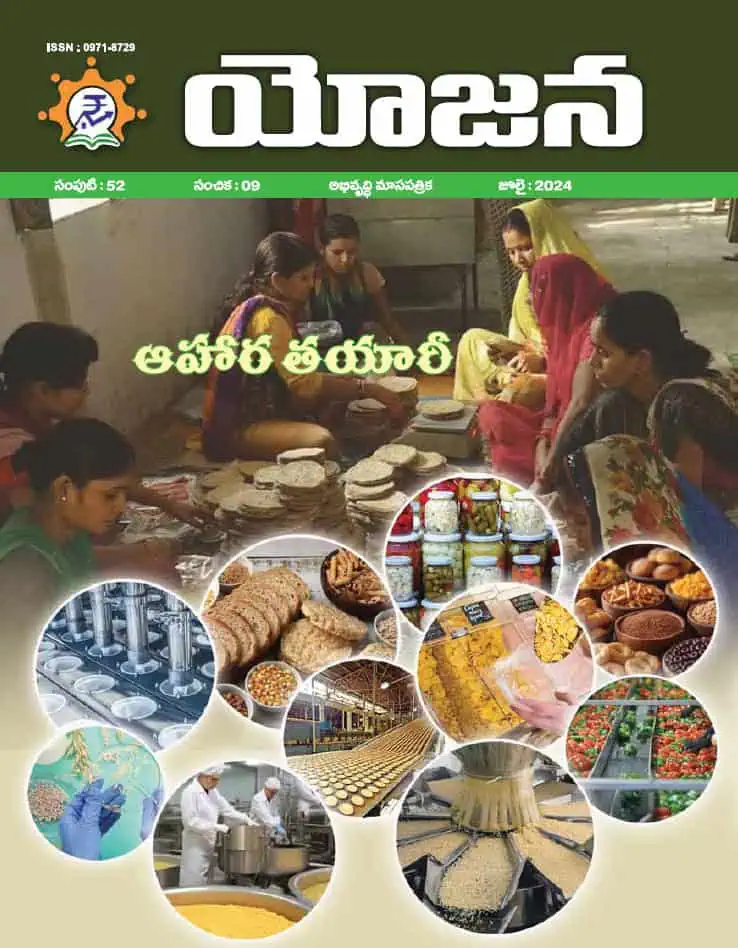
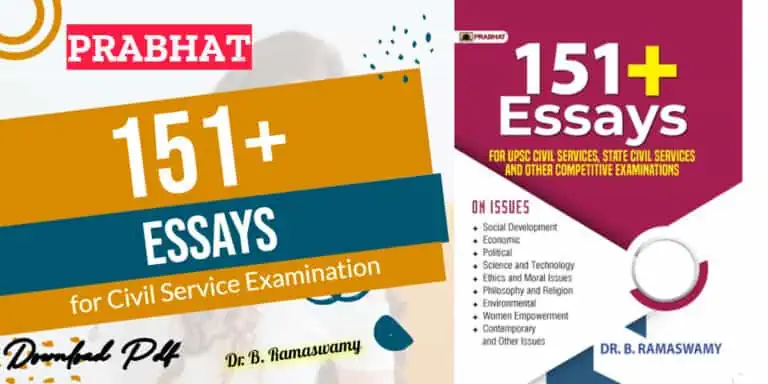
![Comprehensive Guide to IBPS Bank PO-MT Prelim & Main Exams - Disha Experts [9th Edition-2020]](https://www.pavithran.net/wp-content/uploads/2025/01/Comprehensive-Guide-to-IBPS-Bank-PO-MT-Prelim-Main-Exams-Disha-Experts-9th-Edition-2020-768x992.webp)
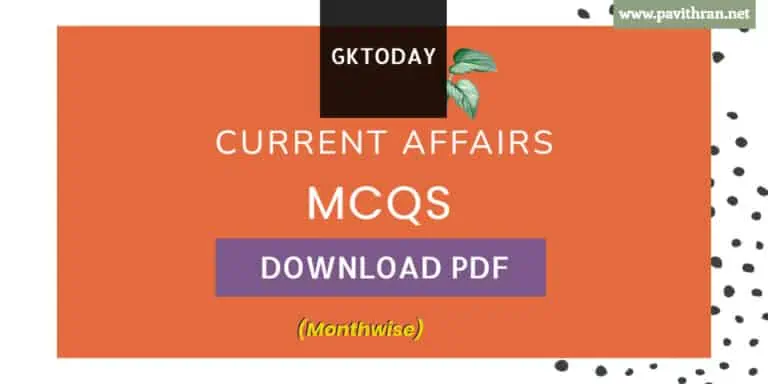
![80 Topicwise 2010 - 2025 SSC Mathematics, English, Reasoning & General Awareness Combo (set of 4 Books) Solved Papers - Disha [2025 Edition]](https://www.pavithran.net/wp-content/uploads/2025/02/80-Topicwise-2010-2025-SSC-Mathematics-English-Reasoning-General-Awareness-Combo-set-of-4-Books-Solved-Papers-Disha-2025-Edition-803x1024.webp)